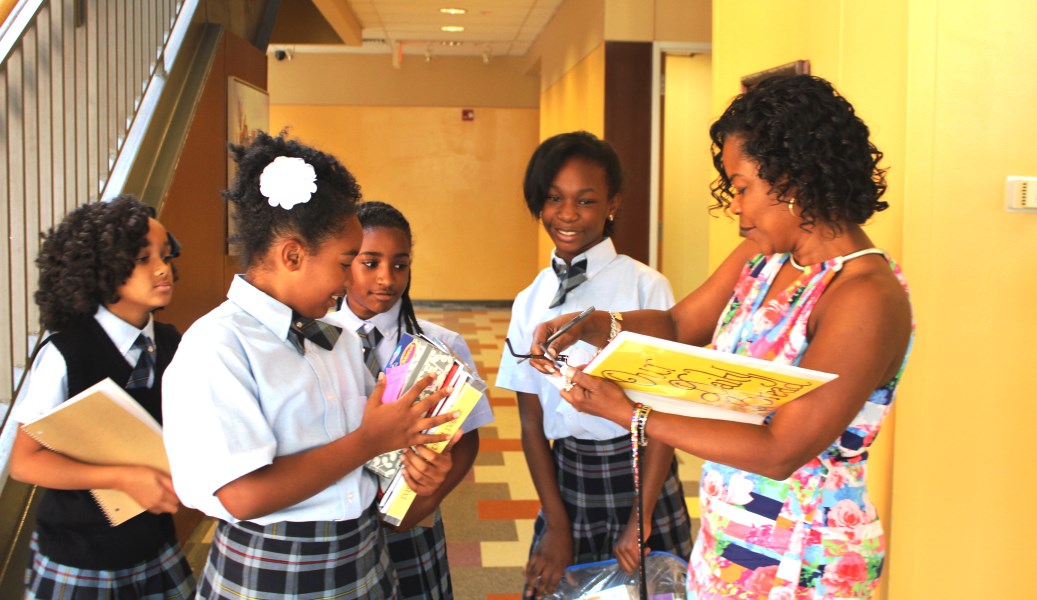On September 7, 2023 in Dallas, Texas, the U.S. Environmental Protection Agency (EPA), Congresswoman Jasmine Crockett (TX-30) and city of Dallas Councilmember Adam Bazaldua celebrated a grant of $800,000 to St. Philip’s School and Community Center in South Dallas for assessment and cleanup of brownfields sites in the South Dallas Forest District.
“I am proud and excited to see that the Bipartisan Infrastructure Law will help improve the quality of life for residents in District 7. This Brownfields grant will be a tremendous step forward in revitalizing our neighborhood,” said Bazaldua.
“St. Philip’s has been a quality school and community leader for many years but has been underinvested in for generations. This funding will not only assist efforts of one of our major learning anchors in South Dallas, but also help bridge the gap between our city’s historically underserved residents and the federal government. I look forward to seeing how this grant will be used to help revitalize Sunny South Dallas,” he explained.
This new grant builds on previous brownfields funding that St. Philip’s has used to assess, cleanup and revitalize other sites in the surrounding community.
The announcement event was held at the school’s WeCreation Center, a multi-purpose community space that was once a former nightclub and had been contaminated by adjacent dry-cleaner facilities. St. Philip’s used brownfields grants to assess contamination and install ventilation systems to deal with vapor intrusion.
“Finally, the federal government, under the direction of President Biden, is recognizing the disproportionate harm of pollution and contamination on disadvantaged communities in America – especially Black communities. For too long, affluent, White communities have been kept clean at the expense of Black neighborhoods – often offloading their garbage and industrial waste to areas seen as less valuable,” said Representative Crockett.
“Brownfield grants like this for Dallas’ St. Philip’s are an important step towards undoing the harm of this policy for current and future generations of Dallas residents. Not only will this grant provide St. Philip’s the resources to remove harmful materials (from nearby buildings with former industrial uses), but it empowers them to reinvest in the community afterwards. Thank you to President Biden, the EPA, and the City of Dallas for helping secure this funding,” she added.
The newest grant will fund more environmental assessments and plans for cleanup and reuse of other sites, including several retail buildings on MLK Blvd in an effort to spur economic development and provide greater opportunity for small business owners to serve the community.
It will also fund the design and installation of two vapor-intrusion mitigation systems in other buildings, updating the brownfields inventory, and conducting community engagement activities.
Thanks to the historic $1.5 billion boost from President Biden’s Bipartisan Infrastructure Law, EPA’s Brownfields Program is helping more communities than ever before begin to address the economic, social, and environmental challenges caused by brownfields and stimulate economic opportunity, and environmental revitalization in historically overburdened communities.
“This grant from the EPA is another monumental step in dismantling decades of environmental injustices that have violated residents of South Dallas,” said Dr. Terry Flowers, Headmaster and Executive Director.
“This grant will allow us to eliminate contamination and at the same time transform what were once venues of vice to venues of vibrant community vitality. Thanks, EPA, for a victory in South Dallas!” he exclaimed.
EPA’s Brownfields Program also advances President Biden’s Justice40 Initiative to direct 40 percent of the overall benefits of certain Federal investments to disadvantaged communities.
The Brownfields Program strives to meet this commitment and advance environmental justice and equity considerations into all aspects of its work. Approximately 84 percent of the MARC program applications selected to receive funding proposed to work in areas that include historically underserved communities.
EPA’s Brownfields Program began in 1995 and has provided nearly $2.37 billion in Brownfield Grants to assess and clean up contaminated properties and return blighted properties to productive reuse.
“EPA’s Brownfields grants have transformed neighborhoods across the country, and thanks to the Bipartisan Infrastructure Law, communities have more money than ever to invest in assessing and cleaning up abandoned properties,” said Regional Administrator Dr. Earthea Nance.
“St. Philip’s School and Community Center has leveraged past grants to benefit South Dallas, and they will continue to show how Brownfields funding can help entire communities grow and thrive with this new funding,” she continued.
EPA’s investments in addressing brownfield sites have leveraged more than $36 billion in cleanup and redevelopment. Over the years, the relatively small investment of federal funding has leveraged, from both public and private sources, nearly 260,000 jobs.
Communities that previously received Brownfields Grants used these resources to fund assessments and cleanups of brownfields, and successfully leverage an average of 10.6 jobs per $100,000 of EPA Brownfield Grant funds spent and $19.78 for every dollar.
Photo courtesy of St. Philip’s School and Community Center.

